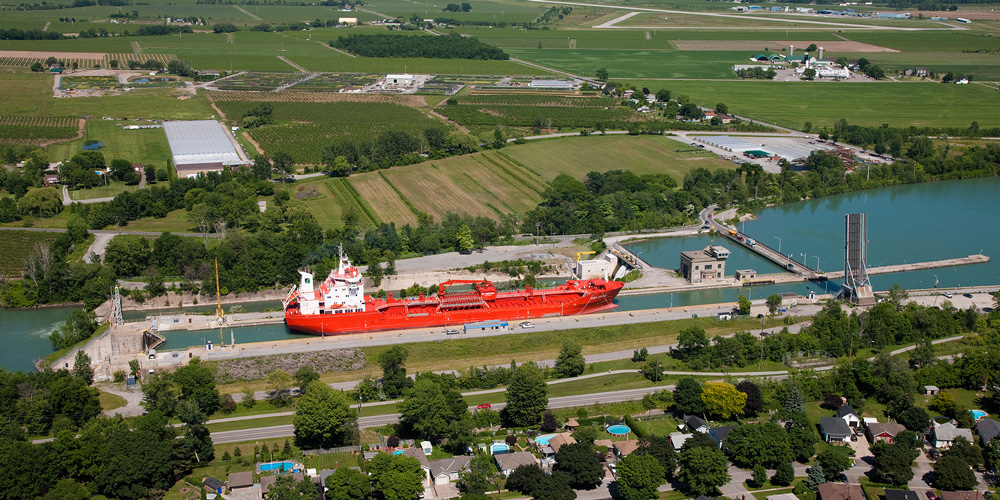Seaway Opening Heralds 50th Navigation Season
March 26, 2008
St. Lambert, Québec (March 26, 2008) – The St. Lawrence Seaway Management Corporation (SLSMC) celebrated the opening of its 50th navigation season today at the St. Lambert Lock. Richard Corfe, President and CEO of the SLSMC, was joined at the ceremony by his American counterpart Collister Johnson Jr., Administrator of the Saint Lawrence Seaway Development Corporation (SLSDC).
“The recently completed Great Lakes St. Lawrence Seaway Study clearly illustrates the Seaway’s importance to the continuing prosperity of our nations” said Richard Corfe. “It reinforces our initiatives in the areas of business growth, the environment and infrastructure.”
The study identifies opportunities to utilize the system’s present locks and channels to alleviate congestion. “The marine mode continues to be the most energy efficient mode of transportation and in an era of rapidly rising fuel prices, we need to play to the strength of each mode” stated Corfe. “Moving more cargo via the marine mode augurs well for the future of our nations as we seek to lessen our dependence on petroleum and lower greenhouse gas emissions”.
The study also noted the importance of revitalizing aging Seaway infrastructure. SLSDC Administrator Collister (“Terry”) Johnson, Jr. heralded the importance of its new asset renewal plan that will provide substantial capital investments if fully approved by Congress. “I am confident that Congress will provide requested funds to modernize U.S. Seaway assets, helping us follow our Canadian partner’s lead in renovating the Seaway to accommodate growing future traffic needs.”
In recognition of the Seaway’s vital role within the economy and to ensure its continued reliability, the SLSMC with the support of Transport Canada will invest $270 million to refurbish the system over the next five years,
To bring about an increase in cargo movements, the SLSMC has initiated a number of strategies, including a revised tariff of tolls coupled with various incentives and volume discounts designed to attract new business to the system. A plan to use technology to attract new vessels and cargoes to use the system’s existing locks and channels is also being executed.
At the same time, exemplary stewardship to minimize environmental impacts is a priority. With the introduction of joint Seaway ballast water standards, all ocean vessels including those with ‘no ballast on board’ will be subjected to an inspection covering 100% of ballast water tanks. This inspection process will ensure that every ocean vessel – while still a minimum of 200 nautical miles offshore – has applied the currently accepted best practice with respect to ballast water management by flushing all of its tanks with salt water.
The system’s official 50th anniversary will take place next year, as the Seaway was commissioned in 1959. Since its inception, over 2.3 billion tonnes valued in excess of $350 billion has been transported via the Seaway. For more information concerning the Seaway, and insight into its future, please visit www.greatlakes-seaway.com.






